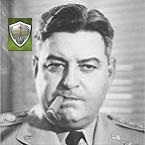ColinWright
Posts: 2604
Joined: 10/13/2005
Status: offline

|
quote:
ORIGINAL: Curtis Lemay
quote:
ORIGINAL: ColinWright
There is the minor problem that as Ben noted, actually taking up positions in this density is tactically suicidal. Not only will you suffer severe losses, but you won't hold the hex either, as the decimated units will tend to evaporate or retreat out.
This leads to one of two possibilities. Either the historical Germans were complete idiots, or your scenario doesn't simulate the reality of the situation very well. That is to say, even if the troops were densely packed in, they couldn't have suffered the kind of increased losses this behavior will produce in TOAW.
Personally, my guess is that your denials notwithstanding, you're running afoul of Norm's excessively rigorous density penalties. If you do pack the troops in, you'll get hammered -- and if you've made the units larger still, the problem will be still worse.
Really, the whole issue could do with some analysis and discussion. But we won't get it. We'll stall out (once again) over the issue of whether your scenario is or is not perfection incarnate.
I have an AAR that analyzes the issue about as thoroughly as it can be analyzed. The scenario simply works too well to be that far off. As usual, all you have are untested theories - dashed by that AAR.
...and I imagine the AAR -- like the one you pointed to for your Barbarossa scenario -- is based on you playing yourself.
Less than convincing...but here we are again.
You're firmly dug in on the grounds that your scenario is just fine, others are doubting it, and any issues of more general significance are getting left on the side of the road about six posts back.
Let me try to communicate something to you. I don't care about your scenarios -- and I mean that in the best way possible. They could indeed be jewels of the TOAW designers' art -- that's okay with me.
Really. If you're a designing genius, I can accept it. But can we discuss the larger issues without worrying about whether one of the points made implies a scenario you wrote in 2003 is or is not flawed?
...because this is at least the second time we've hit this obstacle. First it was Barbarossa -- and that turned into whether negative shock was or was not a completely sufficient device for modeling the deficiencies of the Red Army in 1941. Well whether it was or wasn't, and what other devices might be used, and whether it was possible to simulate the problems at all in TOAW -- all that had to take a back seat. We wound up with Bob's Hindenberg line across the whole conversation -- this implied criticism of Bob's scenario, and he wasn't going to take it. It had to be negative shock, and only negative shock, and negative shock was completely sufficient, and that was it. And why? Because that's what you had used.
Now here we are again. Actually I'm interested in the issues of density, appropriate ways of representing troops, and how to deal with rear-echelon elements. But no...the question becomes is Bob's Normandy scenario valid?
What other scenarios have you written? I mean, I just want to know where else I can expect road blocks.
< Message edited by ColinWright -- 3/21/2009 6:53:52 PM >
_____________________________
I am not Charlie Hebdo
|
 Printable Version
Printable Version










 New Messages
New Messages No New Messages
No New Messages Hot Topic w/ New Messages
Hot Topic w/ New Messages Hot Topic w/o New Messages
Hot Topic w/o New Messages Locked w/ New Messages
Locked w/ New Messages Locked w/o New Messages
Locked w/o New Messages Post New Thread
Post New Thread